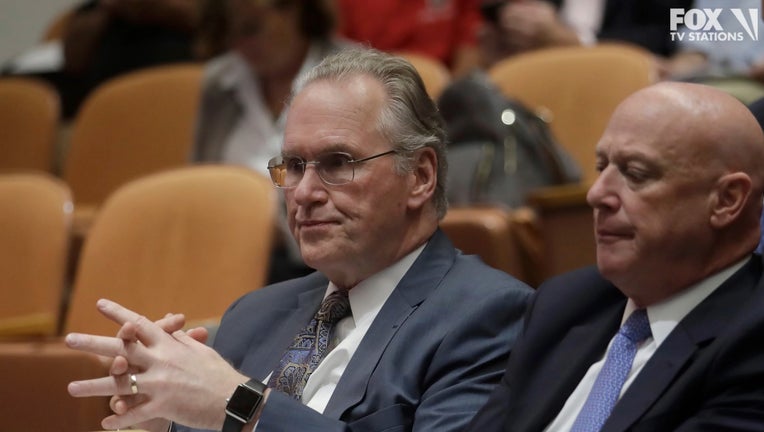Despite bankruptcy, PG&E continues to spend millions on lobbying

Pacific Gas and Electric CEO and president Bill Johnson.
OAKLAND, Calif. - In the midst of bankruptcy, liability for wildfires and ongoing scrutiny over public safety power shutoffs (PSPS), PG&E continues to spend millions of dollars in lobbying. The company’s latest filing with the secretary of state shows it has spent nearly $2.1 million this year to influence lawmakers, pay lobbying firms and compensate in-house lobbyists.
“If it’s anything other than asking for help in improving the system, it just shouldn’t be spent,” said Gerald Singleton, an attorney representing more than 7,000 wildfire victims in cases against PG&E.
Two months after the state’s largest utility filed for bankruptcy protection in January, Singleton asked a judge to block PG&E from spending money on lobbying until the victims were paid. The judge denied the request. “If you can’t pay your bills, you shouldn’t be asking the legislator and spending that money to get you assistance, you should be using that money to help your victims,” said Singleton.
It is not unusual for a company like PG&E to spend money lobbying. In fact, last year, it spent nearly $10 million on it. Since 2009, more than $20 million. The company’s filing shows donations to a wide range of organizations and candidates, including more than $208,000 to Governor Gavin Newsom’s 2018 gubernatorial run. “They have spent decades not focusing on you, but focusing on themselves, focusing on shareholders, focusing with respect on Wall Street, not public safety,” said Governor Newsom at a recent news conference.
In the wake of the public safety power shut offs, he’s railed on the utility. When asked recently about PG&E’s lobbying, the governor was defiant. “Their contributions to me sure as hell haven’t influenced me to be more positive, I’ll leave it at that,” said Newsom.
We asked several times for a one-on-one interview with the governor to dive deeper into the issue, but never received a response from his office. PG&E sent this statement: “Lobbying expenses are paid for with shareholder funds, not utility customer dollars. Like many individuals and businesses, PG&E participates in the political process. PG&E holds itself to the highest standards of public disclosure and compliance with applicable laws and regulations.”
Richard Hertz is a political science professor at Sonoma State. He also worked at the California Political Practices Commission. He says while the optics may be bad, there’s nothing technically wrong with what PG&E is spending. “It’s not surprising that PG&E has turned up the lobbying spigot dollars because they’ve got a lot at stake and what they’re allowed to do and not do,” said Hertz.
Hertz said in this political system, this is how companies like PG&E and others conduct business. He also adds that while $10 million may seem like a lot, it pales in comparison to the billions of dollars in liability the utility is facing. “They’re basically taking their parking meter money and spending it on lobbying compared to what the potential cost or benefit to them of the outcome of legislation.”

